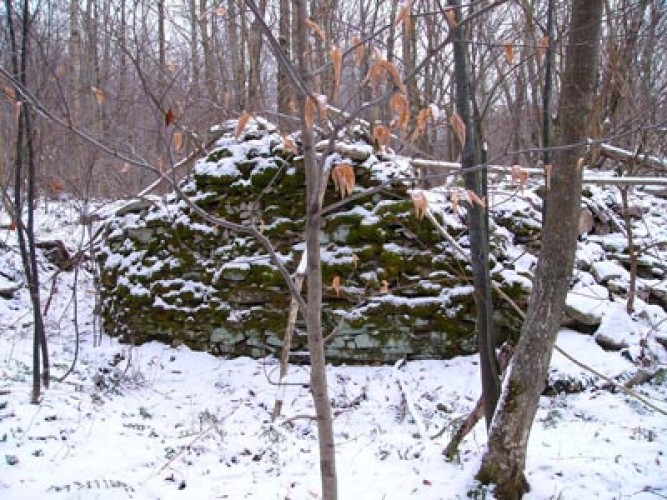This archeological ruin was photographed in a yellow-birch/hard maple stand near the top of a mountain in southern Vermont. It’s not a cellar hole. For a hint, consult the winter 2009 issue of Northern Woodlands magazine.
Answer
A charcoal kiln.
This charcoal kiln was constructed in the mid eighteen hundreds to service the Henry Burden & Sons iron works. Sooty-faced colliers packed the kiln with birch and maple, then reduced it to charcoal in about a week’s time. The charcoal was brought to a smelting plant in Shaftsbury, Vermont, where iron ore was smelted into pig iron. This raw material was then shipped to Troy, New York via a private rail spur on the Rutland and Bennington Railroad. The iron was used in any number of applications, including horseshoes for the Union Cavalry in the Civil War.
If you haven’t read the article by Hugh Canham on the wood chemical industry in our winter issue, please do.
Thanks to Andrew Crosier for sharing this great photo.
This week’s contest winner was Monica Kulp of Berlin VT


